
ISSN 1859-1531 - TẠP CHÍ KHOA HỌC VÀ CÔNG NGHỆ - ĐẠI HỌC ĐÀ NẴNG, VOL. 23, NO. 4, 2025 7
EXPLORING THE IMPACT OF OMOTENASHI AND CULTURAL
FAMILIARITY ON PERCEIVED AUTHENTICITY IN JAPANESE ETHNIC
RESTAURANTS IN VIETNAM
KHÁM PHÁ TÁC ĐỘNG CỦA OMOTENASHI VÀ SỰ QUEN THUỘC VĂN HÓA ĐẾN
TÍNH ĐÍCH THẬT CẢM NHẬN TẠI CÁC NHÀ HÀNG NHẬT Ở VIỆT NAM
Tran Thien Tri*, To Thi Hong Anh, Duong Kim Ngoc, Nguyen Ho Thanh Thao, Phan Thi Thao Trinh
The University of Danang - University of Economics, Vietnam
*Corresponding author: tritt@due.edu.vn
(Received: February 28, 2025; Revised: March 12, 2025; Accepted: March 15, 2025)
DOI: 10.31130/ud-jst.2025.110E
Abstract - This study investigates the impact of Omotenashi and
cultural familiarity on perceived authenticity at Japanese ethnic
restaurants in Vietnam. Employing 2x2 between-subjects
experimental design, the study manipulated Omotenashi-style
service and assessed cultural familiarity among participants,
second-year students at The University of Danang - University of
Economics. The results indicate that, experiencing Omotenashi
significantly increases the perceived authenticity of Japanese
restaurants, irrespective of participants’ prior familiarity with
Japanese culture. Furthermore, an understanding of Japanese
culture enhances perceived authenticity. However, the interaction
between Omotenashi and cultural familiarity was not significant.
These findings suggest that both Omotenashi and cultural
familiarity independently contribute to perceived authenticity,
offering valuable insights for restaurant managers and
policymakers aiming to promote Japanese culinary culture abroad.
Tóm tắt - Nghiên cứu này xem xét tác động của Omotenashi và
sự quen thuộc văn hóa đến tính đích thực cảm nhận tại các nhà
hàng Nhật ở Việt Nam. Bằng thiết kế thực nghiệm giữa các
nhóm 2x2, nghiên cứu kiểm soát phong cách phục vụ
Omotenashi và đánh giá mức độ quen thuộc văn hóa của người
tham gia, là sinh viên năm hai tại Trường Đại học Kinh tế - Đại
học Đà Nẵng. Kết quả cho thấy, trải nghiệm Omotenashi làm
tăng đáng kể tính đích thực cảm nhận về nhà hàng Nhật, bất kể
có quen thuộc với văn hóa Nhật của người tham gia hay không.
Hơn nữa, sự hiểu biết về văn hóa Nhật cũng làm tăng tính đích
thực cảm nhận. Tuy nhiên, tương tác giữa Omotenashi và sự
quen thuộc văn hóa không có ý nghĩa thống kê. Những phát hiện
này cho thấy, Omotenashi và sự quen thuộc văn hóa đều đóng
góp độc lập vào tính đích thực cảm nhận, mang lại những hiểu
biết quan trọng cho các nhà quản lý nhà hàng và nhà hoạch định
chính sách nhằm thúc đẩy ẩm thực Nhật Bản ở nước ngoài.
Key words - Perceived authenticity; cultural familiarity;
Japanese ethnic restaurants; Omotenashi
Từ khóa - Tính đúng chất cảm nhận; sự quen thuộc văn hóa; nhà
hàng Nhật; lòng hiếu khách kiểu Nhật
1. Introduction
Japanese ethnic food has been thriving in recent years in
Vietnam. Its ethnic restaurants in Vietnam reached nearly
2,500 in 2020, which is more than triple the 770 restaurants
recorded in 2015 [1]. Japanese nationals own about half of
the Japanese restaurants in Vietnam, while the other half are
either operated by Vietnamese or in partnership with
Japanese through franchise models [1], [2].
In ethnic restaurants, authenticity is highly valued by
customers and can influence their purchase intentions,
revisit intentions, willingness to pay more, and patronage
behavior [3] - [7]. Authenticity has also caught much
attention from the Japanese government in Japanese foods
abroad [8], [9]. Since 2015, initiatives like the “Action Plan
10 for propagating the charm of Japanese cuisine” have
been implemented to educate chefs on authentic Japanese
culinary practices and promote the use of Japan-produced
ingredients [8], [10]. Additionally, since 2016, the
“Japanese Cuisine Skills Certification Guidelines” aim to
standardize traditional cooking practices among overseas
Japanese restaurants [9].
Numerous research papers have discussed factors
affecting customers’ perceptions of authenticity in ethnic
restaurants. These factors, often embedded within the
restaurants, include tangible and physical cues such as
ingredients, ambiance, and service elements [5] - [7], [11].
For Japanese ethnic restaurants in Vietnam, many
Vietnamese diners seek not only culinary delights but also
a cultural and lifestyle experience, which is often reflected
in the restaurant’s architecture and decor [1]. Ethnic dining
experiences help people enjoy unique meals different from
their daily routine and gain a better understanding of a
particular country’s food culture and gastronomic identity
[12]. Therefore, Japanese ethnic restaurants have the
opportunity to enhance their authenticity and attract more
customers by investing in tangible elements that showcase
Japanese culture and lifestyle.
Additionally, there is also a fact that many Japanese
companies in Vietnam such as Toyota, Aeon Mall, and
Pizza 4P apply Omotenashi (Japanese way of hospitality)
[13] - [15] and often promote their service quality through
the concept of Omotenashi [16], [17]. This Japanese
hospitality has impressed Vietnamese customers with
experiences not typically encountered within Vietnam’s
service culture [18]. This is because Omotenashi is deeply
rooted in traditional Japanese culture, influenced by
Japan’s culture, nature, history, and lifestyle [19]. Even
though there have been many qualitative papers studying
the practice of Omotenashi in overseas Japanese

8 Tran Thien Tri, To Thi Hong Anh, Duong Kim Ngoc, Nguyen Ho Thanh Thao, Phan Thi Thao Trinh
restaurants [20] - [22], there is little work studying the
potential impact of Omotenashi on the authenticity of
Japanese ethnic restaurants. Moreover, the service aspect
of Omotenashi that we choose to focus on in this study
contributes to the study of intangible cues as factors
affecting authenticity.
To establish the research model, we examined the
relationship between Omotenashi, the level of familiarity
with Japanese culture, and the perceived authenticity of
Japanese ethnic restaurants in Vietnam. Japanese culture
was officially introduced to Vietnam over 50 years ago via
cultural diplomacy activities [3]. In recent years, Japanese
culture has also been introduced widely to Vietnamese
society via social media. Via such ways, the understanding
of Japanese culture could impact the relationship between
Omotenashi and perceived authenticity.
Thus, this study aims to (1) examine the impact of
Omotenashi on the perceived authenticity of Japanese
ethnic restaurants in Vietnam and (2) investigate whether
familiarity with Japanese culture affects the relationship
between Omotenashi and perceived authenticity.
2. Literature review and methodology
2.1. Literature review
2.1.1. Japanese ethnic restaurants
Similar to what Ebster and Guist [23] defined, ethnic
restaurants are dining establishments themed around a
specific culture’s cuisine and environment, aiming to
represent and evoke the atmosphere of that culture. They are
usually owned by individuals having the same cultural
backgrounds. These ethnic restaurants typically primarily
target residents of the host country rather than people from
the culture that the restaurant aims to represent. Moreover,
the term is applied not only to small-sized ethnic restaurants
but also to restaurant chains. In this study, Japanese ethnic
restaurants are those established in Vietnam, serving
Japanese dishes such as Sushi, Ramen, Udon, Gyudon, etc.
Many big Japanese restaurant chains such as Tokyo Deli,
Yakimono, Sushi Rei, Gyu Shige, and Ootoya also appear in
big cities in Vietnam [2]. In Vietnam, fifty percent of
Japanese restaurants are owned by Japanese nationals,
whereas the remaining half are either operated by
Vietnamese proprietors or through franchise partnerships
with Japanese entities [1], [2]. JETRO’s survey revealed that
although Japanese restaurants in Vietnam initially targeted
Japanese expatriates, 90 percent of their clientele are now
Vietnamese [1].
2.1.2. Perceived authenticity
Authenticity conveys trustworthiness, representing
qualities like genuineness, innocence, truthfulness, and
being unaltered [24]. It can also signify uniqueness, heritage,
reliability, and consistency [25]. Although definitions of
authenticity vary, three main approaches have emerged:
objectivist, constructivist, and existentialist [25] Objectivists
view authenticity as originality judged by experts or natives
[26]. Constructivists see it as subjective and context-
dependent, while existential authenticity focuses on shaping
identities for a genuine sense of self [25].
Grayson and Martinec [27] advanced research on
perceived authenticity, exploring how customers discern it.
Objectivists rely on “indexical cues”, factual pieces of
evidence that confirm originality, while constructivists use
“iconic cues”, sensory experiences compared to
preexisting knowledge. Iconic cues assist customers in
recognizing whether an item resembles the original.
As discussed above, since ethnic restaurants usually
aim at residents of the host country rather than those of the
home culture [23], customers of the host culture should
perceive authenticity based on their previous knowledge or
experiences. In other words, customers of the host country
tend to perceive authenticity subjectively [5], [26].
Accordingly, they tend to look for “iconic cues” instead of
“indexical cues” to judge authenticity [27].
2.1.3. Omotenashi - the Japanese way of hospitality
Omotenashi is a unique form of Japanese hospitality
deeply rooted in the culture [21]. Originating from Japan’s
tea ceremony tradition, it involves three elements:
“shitsurai” (environment preparation), “furumai” (host’s
commitment), and “shikake” (interactive moments) [28].
Similarly, Akatsuka [22] emphasizes that Omotenashi
should go beyond superficial service to include proper
arrangement of the environment and facilities. Goantara
[29] studied Omotenashi from “servicescape” and
“experiencescape” perspectives, highlighting its physical
and service aspects. For more specific practices of
Omotenashi, Akatsuka [22] proposed four levels: basic
level (preventing dissatisfaction), higher level (creating
satisfaction), high level (exceeding satisfaction, creating an
impression), and super high level (surpassing even that
impression).
Numerous studies have discussed factors affecting
customers’ perceptions of authenticity in ethnic
restaurants, often focusing on tangible aspects like
ingredients and ambiance [5] - [7], [11]. Similar to these
studies, the preparation of the physical settings for
Japanese ethnic restaurants under Omotenashi could
potentially affect perceived authenticity.
Meanwhile, the service aspect of Omotenashi could
also have a positive impact on perceived authenticity.
Under the constructivist approach, Omotenashi service
offering in the Vietnamese context can also provide iconic
authenticity that Vietnamese customers may perceive
when they have some sense of how this kind of service
from Japanese culture tends to look like [27]. Therefore,
we proposed the following hypothesis:
Hypothesis 1. Vietnamese customers who are served
with Omotenashi in Japanese restaurants in Vietnam will
have higher perceived authenticity than those not served
with Omotenashi.
2.1.4. Cultural familiarity
Cultural familiarity arises from cumulative exposure to
a nation’s popular culture via media [4], [30]. While Ebster
and Guist [23] define high cultural familiarity as having
visited the culture’s home country, this study focuses on
cultural exposure within the host country. Moreover,
Japanese culture has been formally introduced to Vietnam

ISSN 1859-1531 - TẠP CHÍ KHOA HỌC VÀ CÔNG NGHỆ - ĐẠI HỌC ĐÀ NẴNG, VOL. 23, NO. 4, 2025 9
for over 50 years through cultural diplomacy [3] and more
recently through social media. Posts and reels about
Japanese tourist spots, festivals, and cuisine have
contributed to this spread. Therefore, many Vietnamese
have formed knowledge or experiences about Japanese
culture. These exposures help Vietnamese customers
understand Japanese ethnic restaurants, allowing them to
perceive iconic authenticity by comparing their
experiences with prior cultural knowledge [27].
Hypothesis 2. Vietnamese customers having high
Japanese cultural familiarity will be more likely to perceive
authenticity than those who are less familiar with Japanese
culture.
This study also examines how familiarity with Japanese
culture influences perceived authenticity among
individuals who experience Omotenashi service and those
who do not. For individuals familiar with Japanese culture,
exposure to Omotenashi is expected to have a stronger
impact on perceived authenticity. Familiarity with a
nation’s culture can be enhanced through increased
exposure, leading to a deeper understanding and
accumulation of knowledge and experiences [30].
Consequently, while being served with Omotenashi,
Vietnamese customers familiar with Japanese culture are
more likely to recognize and appreciate this unique form of
hospitality, perceiving it as authentically iconic [27]. In
fact, countries like Hong Kong, Vietnam, Thailand,
Malaysia, and Indonesia are now known as popular places
for implementing Omotenashi [29]. Omotenashi is now a
crucial strategy for Japanese retailers, contributing to the
creation of a distinctive “Japanese” brand image through
unique customer services [20]. In contrast, for those not
served with Omotenashi service, their perceived
authenticity ratings may be significantly lower. The lack of
Omotenashi prevents them from comparing their
experiences with their prior knowledge, as the cues of
iconic authenticity are not present [27].
On the other hand, for those unfamiliar with Japanese
culture, perceived authenticity is expected to remain
relatively stable, regardless of being served with
Omotenashi or not. Since these individuals lack prior
knowledge of Omotenashi as a distinct Japanese cultural
concept, the cues of indexical authenticity are not present
[27]. Thus, we proposed the following hypothesis:
Hypothesis 3. The effect of Omotenashi on perceived
authenticity will be moderated by cultural familiarity, such
that it enhances perceived authenticity for culturally
familiar individuals but has no significant impact on those
unfamiliar with Japanese culture.
Figure 1. Conceptual framework
2.2. Methodology
2.2.1. Design and manipulation
A 2x2 between-subjects design was used with the
service aspect of Omotenashi and cultural familiarity as
independent variables. For manipulation, we referenced
Akatsuka’s [22] four levels of Omotenashi and our own
experiences at Pizza 4P’s, a Japanese-owned restaurant in
Vietnam that explicitly advertises its use of Omotenashi
service [31], to create two scenarios: one with Omotenashi
service and one with standard service. These scenarios
were depicted in two videos, using the same series of
pictures of a Japanese restaurant in Vietnam. Both videos
included voice-over narration, subtitles, and descriptive
visuals to enhance viewer immersion. The Omotenashi
service video was designed to highlight elements of
Omotenashi such as warm customer greetings,
personalized assistance, attention to detail, and proactive
service adjustments that offer an impressive dining
experience. In contrast, the standard service video
represents a more neutral dining experience, where service
interactions remain minimal and functional. Customers are
not greeted upon arrival, assistance is not proactively
offered, and meals are served without structured
presentation or additional explanations.
2.2.2. Experiment procedures
We recruited second-year students from six classes of
the International Business module at The University of Da
Nang - University of Economics. Most students are in
accounting. Students were chosen as the research sample
for their homogeneity, reducing the impact of uncontrolled
variables in the experiment. This ensures that responses
primarily reflect the effects of Omotenashi and cultural
familiarity, rather than factors like age or income.
Additionally, students are a key customer segment for
Japanese restaurants in Vietnam, making their behavior
relevant to study. The study was conducted in designated
classrooms from March 12th to 18th, 2024. Upon arrival,
each student was instructed to a table, put on earphones,
and use their smartphone to scan a QR code to access a link
on Qualtrics. Each was randomly assigned to one of two
scenario videos before heading to the survey.
2.2.3. Survey and measures
After watching the video, participants rated eight items
on a 6-point Likert scale to measure the level of
Omotenashi practice perceived in Japanese restaurants in
the video, based on Akatsuka [22] (e.g., “I feel welcomed
even before entering the restaurant”). The measure had
high reliability (Cronbach’s alpha = 0.977).
Participants then assessed their familiarity with
Japanese culture using two items adapted from Liu et al.
[4] (e.g., “I am familiar with Japanese culture” and “I am
familiar with Japanese food”), also on a 6-point Likert
scale (Cronbach’s alpha = 0.806). For further analysis, they
were categorized into two groups by using a mean split:
less familiar (mean score below 3.49) and more familiar
(mean score above 3.49).
Next, they rated perceived authenticity of the Japanese
restaurant using five items adapted from Kim et al. [32]

10 Tran Thien Tri, To Thi Hong Anh, Duong Kim Ngoc, Nguyen Ho Thanh Thao, Phan Thi Thao Trinh
(e.g., “I consider this to be an authentic Japanese
restaurant.”), with high reliability (Cronbach’s alpha =
0.955). Participants also provided socio-demographic
information, including gender, monthly income, field of
study, and whether they had ever dined at a Japanese
restaurant in Vietnam.
Table 1. Measurement items
Construct
Measurement items
Reference
Perceived
Omotenashi
I felt welcomed even before stepping
into the restaurant.
I feel that the staff are always willing
to listen and understand my needs.
I feel there is flexibility and a
willingness to adjust the service to suit
my requirements.
I perceive the attention to every small
detail in the service from the staff.
I feel the sophistication in the way the
staff serves.
I sense the effort of the staff in making
me feel as comfortable as at home.
I feel the restaurant shows concern for
my safety through the measures
applied.
I feel the restaurant shows concern for
my dining experience.
Akatsuka
[22]
Cultural
familiarity
I am familiar with Japanese culture.
I am familiar with Japanese cuisine.
Liu et al.
[4]
Perceived
authenticity
I consider this a truly authentic
Japanese restaurant.
This restaurant makes me feel
connected to Japanese culture.
I can experience and/or learn about
Japanese culture at this restaurant.
This restaurant makes me feel like I am
in Japan.
I feel that I am being served authentic
Japanese food.
Kim et al.
[22]
2.2.4. Research ethics
In conducting this research and administering the
surveys, we prioritized maintaining ethical standards and
respecting the participants. Participation was entirely
voluntary, and students were given clear explanations
about the study's objectives, methods, and purposes.
Personal information was kept confidential and was not
disclosed to any unrelated third parties without explicit
consent from the participants. The research proposal had
been approved by the Faculty of International Business
committee before implementation.
3. Results
3.1. Participants profile
A total of 243 students participated, with 232 valid
responses analyzed. The sample included 86.2% females
(n = 200) and 13.8% males (n = 32), with 65.1% majoring
in accounting (n = 151). Most respondents reported a
monthly income below 2 million VND (72.8%).
Additionally, 58.2% had never dined at a Japanese
restaurant in Vietnam, while 41.8% had. The mean rating
for familiarity with Japanese culture was 3.49
(SD = 1.16), indicating a certain level of awareness
among participants.
3.2. Manipulation check
The random assignment of two groups achieved the
expected effectiveness. Supporting the manipulation,
participants watching the video of service with Omotenashi
reported significantly higher levels of perceived
Omotenashi (MeanOmotenashi = 5.42) as compared to those in
the group watching the video depicting standard service
(MeanNon_Omotenashi = 2.12, t = -34.920, p < 0.001).
3.3. Omotenashi and cultural familiarity
We conducted a two-way ANOVA to test the
hypotheses, with Omotenashi (OM) (served vs. not served)
and cultural familiarity (CF) (familiar vs. non-familiar) as
independent variables.
Significant main effects were found for OM and CF.
Supporting Hypothesis 1, those served with OM rated
perceived authenticity higher (MeanOmotenashi = 4.9009 vs.
MeanNon_Omotenashi = 2.8118, F = 220.729, p< 0.001).
CF also significantly increased perceived authenticity
(MeanFamiliar = 4.2271 vs. MeanNon-Familiar = 3.2239,
F = 11.599, p < 0.001) supporting Hypothesis 2. However,
the interaction between OM and CF was not significant
(F = 0.089, p = 0.765), resulting in the rejection of
Hypothesis 3. This suggests that OM positively impacts
perceived authenticity regardless of CF.
Table 2. Means and standard deviations of perceived
authenticity based on OM and CF
OM
CF
Mean
SD
N
Not served
Non-Familiar
2.619
0.919
63
Familiar
3.028
1.217
56
Total
2.812
1.085
119
Served
Non-Familiar
4.538
0.906
29
Familiar
5.026
0.702
84
Total
4.901
0.785
113
Total
Non-Familiar
3.224
1.277
92
Familiar
4.227
1.358
140
Total
3.829
1.412
232
Table 3. Two-way ANOVA results: effects of OM and CF on
perceived authenticity
Source
Type III
SSE
df
MSE
F
Sig.
OM
191.46
1
191.5
220.7
0.000
CF
10.06
1
10.1
11.6
0.001
OM x CF
0.08
1
0.1
0.1
0.765
4. Conclusions
As Vietnam increasingly embraces global influences,
Japanese restaurants have flourished, becoming a
significant part of the country’s culinary landscape [1], [2].
Authenticity is crucial in ethnic restaurants, impacting
customers’ purchasing intentions and loyalty [4] - [7]. This
study examined the role of Omotenashi in enhancing the

ISSN 1859-1531 - TẠP CHÍ KHOA HỌC VÀ CÔNG NGHỆ - ĐẠI HỌC ĐÀ NẴNG, VOL. 23, NO. 4, 2025 11
perceived authenticity of Japanese ethnic restaurants in
Vietnam, highlighting the importance of the service aspect
of Omotenashi and cultural familiarity.
The findings indicate that Omotenashi significantly
boosts perceived authenticity, regardless of customers’
familiarity with Japanese culture. First, cultural familiarity
was measured using self-reported items, which may not
accurately reflect participants' understanding of Japanese
culture. In addition, the items assessed the general
familiarity with Japanese culture but did not identify
whether participants recognized Omotenashi as a distinct
aspect of Japanese hospitality. As a result, this construct
may not have been strong enough to create a moderation
effect in the relationship between perceived Omotenashi
and perceived authenticity.
Second, even participants who self-reported low
cultural familiarity may still have recognized Omotenashi-
like service behaviors due to their widespread
representation in Vietnamese media. For example, the act
of Japanese football fans picking up trash at stadiums after
football matches has been widely covered in the media,
reinforcing Japan’s cultural image of politeness,
consideration, and communal responsibility [33]. The
Japanese are also well-known for orderly queuing and strict
adherence to public rules [34]. These images may have led
participants, regardless of their self-reported cultural
familiarity, to associate their perceived Omotenashi service
with typical Japanese behaviors they have encountered
through media exposure. Consequently, both groups may
have rated perceived authenticity similarly, reducing the
likelihood of a statistically significant interaction effect
between Omotenashi and cultural familiarity.
Additionally, the study highlighted the significant
impact of cultural familiarity, revealing that a better
understanding of Japanese culture significantly enhances
Vietnamese customers’ perceived authenticity of
Japanese ethnic restaurants in Vietnam. It’s important to
note that this understanding of Japanese culture does not
extend as far as the definition used by Ebster and Guist
[23], who categorized individuals with high cultural
familiarity as those who have visited the culture’s home
country. In our study, the majority of the participants had
not visited Japanese restaurants in Japan before.
Therefore, in this context, general cultural familiarity
helps them appreciate iconic authenticity rather than
indexical authenticity [27], especially if they took iconic
cues from the pictures in the videos.
The study’s contributions include integrating
Omotenashi into authenticity research, emphasizing
service elements alongside tangible aspects [5] - [7], [11].
As another academic contribution, this study also shows
that Omotenashi can elevate perceived authenticity even
without cultural familiarity, offering a new perspective on
cultural exposure and authenticity [4], [5], [30].
In terms of implications for the Japanese government’s
policy, the findings reaffirm the role of Omotenashi in
enhancing authenticity for Japanese restaurants abroad.
Omotenashi could become a powerful tool that Japan can
use in introducing Japanese culture [10].
Restaurant managers can enhance perceived
authenticity by incorporating Omotenashi into service
protocols and training staff to provide Omotenashi to
customers. In Vietnam, Pizza 4P’s exemplifies
Omotenashi, especially in its service [31]. Based on our
experiment manipulation, Omotenashi expressions such as
personalized interactions, proactive assistance, and
attention to detail effectively enhance perceived
authenticity. These include gestures like welcoming
customers warmly, anticipating their needs, carefully
presenting dishes, respectful bows, and structured service
sequences. Furthermore, in our research, only when we
manipulated the experience of Omotenashi, did they
become aware of it. Thus, it is essential not only to offer
Omotenashi but also to actively promote it so that
Vietnamese customers are aware of its presence in the
restaurant. Moreover, since the study reveals that
customers with higher Japanese cultural familiarity rate
authenticity higher, Japanese restaurants should educate
customers about Japanese culture, especially Omotenashi,
through cultural events or promotional channels.
This study has some limitations. We used two self-
reported items to measure cultural familiarity, which may
introduce bias. Future research should develop more
objective measures and refine scales to better capture
familiarity with Omotenashi and its cultural roots.
Additionally, our manipulation focused on the service
aspect of Omotenashi. Future studies should also examine
the physical elements of restaurants for a more
comprehensive perspective.
Moreover, this study primarily examined the effect of
Omotenashi on perceived authenticity, without exploring
its broader implications on business outcomes. Future
studies should investigate whether an increase in perceived
authenticity leads to higher customer satisfaction, loyalty,
or positive word-of-mouth, thereby providing insights into
the tangible benefits of Omotenashi for businesses.
Acknowledgment: This research is a part of the
University-level research project granted by The
University of Danang - University of Economics with grant
number T2024-04-48.
REFERENCES
[1] T. Ha and N. Binh, “Number of Japanese restaurants in Vietnam
triples in five years”, Tuoitrenews.vn, November 29, 2022. [Online].
Available: https://tuoitrenews.vn/news/business/20221129/number-
of-japanese-restaurants-in-vietnam-triples-in-five-years/70245.html
[Accessed: February 03, 2025].
[2] VNA, “Japanese restaurant chains boom in urban Vietnam”,
vir.com.vn, August 05, 2019. [Online]. Available:
https://vir.com.vn/japanese-restaurant-chains-boom-in-urban-
vietnam-69737.html [Accessed: February 03, 2025].
[3] H. T. Huong, “Japanese cultural diplomacy and the process of
Japanese cultural reception in Vietnam from 1993 to 2022”,
Master’s thesis, Ba Ria - Vung Tau University, 2023.
[4] H. Liu, H. Li, R. B. DiPietro, and J. A. Levitt, “The role of
authenticity in mainstream ethnic restaurants: evidence from an
independent full-service Italian restaurant”, International Journal of
Contemporary Hospitality Management, vol. 30, no. 2, pp. 1035-
1053, 2018.
[5] H. Youn and J. H. Kim, “Effects of ingredients, names and stories




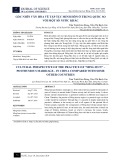
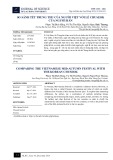

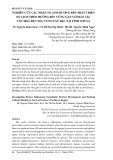
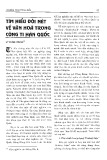
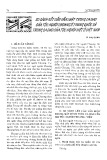
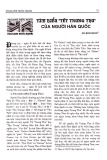









![Giáo trình Tổ chức và Quản lý Hoạt động Văn hóa Thông tin Cơ sở (Ngành Quản lý Văn hóa - Trung cấp) - Trường Trung cấp Mỹ thuật - Văn hóa Bình Dương [Mới nhất]](https://cdn.tailieu.vn/images/document/thumbnail/2025/20251110/kimphuong1001/135x160/17861762748492.jpg)





